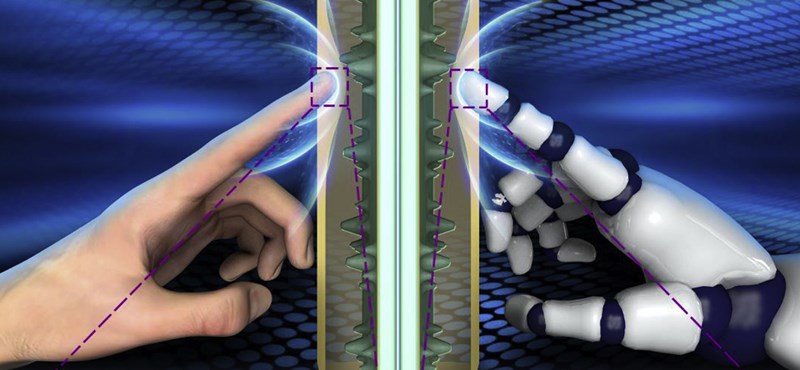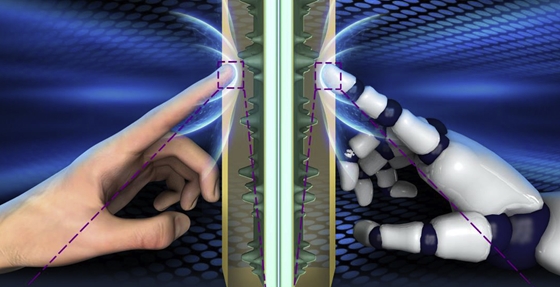[{“available”:true,”c_guid”:”689a81e3-b01a-458b-a6d7-17a7fbbc8187″,”c_author”:”hvg.hu”,”category”:”cegauto”,”description”:”A környezetvédelemre hivatkozva ilyen nehéz autókat gyártani, amelyek többsége naponta ötven kilométert megy semmi értelme.”,”shortLead”:”A környezetvédelemre hivatkozva ilyen nehéz autókat gyártani, amelyek többsége naponta ötven kilométert megy semmi…”,”id”:”20230220_A_Dacia_szerint_elfogadhatatlanok_a_ketharom_tonnas_elektromos_autok”,”image”:”https://api.hvg.hu/Img/ffdb5e3a-e632-4abc-b367-3d9b3bb5573b/689a81e3-b01a-458b-a6d7-17a7fbbc8187.jpg”,”index”:0,”item”:”25a3a2f4-515f-4134-a388-067c28056e46″,”keywords”:null,”link”:”/cegauto/20230220_A_Dacia_szerint_elfogadhatatlanok_a_ketharom_tonnas_elektromos_autok”,”timestamp”:”2023. február. 22. 06:20″,”title”:”A Dacia szerint elfogadhatatlanok a két-három tonnás elektromos autók”,”trackingCode”:”RELATED”,”c_isbrandchannel”:false,”c_isbrandcontent”:false,”c_isbrandstory”:false,”c_isbrandcontentorbrandstory”:false,”c_isbranded”:false,”c_ishvg360article”:false,”c_partnername”:null,”c_partnerlogo”:”00000000-0000-0000-0000-000000000000″,”c_partnertag”:null},{“available”:true,”c_guid”:”98de9fdc-ce59-4cb2-ae43-cde5a284251d”,”c_author”:”Hamvay Péter”,”category”:”360″,”description”:”Úgy tűnik, Magyarországon a szexuális zaklatásnak is van pártpreferenciája. A kormány és médiája a Fidesz céljaira aknázza ki a gyermekpornográfiával gyanúsított pedagógiai asszisztens ügyét, de az egyházban történtekről hallgat.”,”shortLead”:”Úgy tűnik, Magyarországon a szexuális zaklatásnak is van pártpreferenciája. A kormány és médiája a Fidesz céljaira…”,”id”:”20230222_szexualis_zaklatas_gyermekpornografia”,”image”:”https://api.hvg.hu/Img/ffdb5e3a-e632-4abc-b367-3d9b3bb5573b/98de9fdc-ce59-4cb2-ae43-cde5a284251d.jpg”,”index”:0,”item”:”b60a0513-594f-4fb3-8e53-52a62287e4d2″,”keywords”:null,”link”:”/360/20230222_szexualis_zaklatas_gyermekpornografia”,”timestamp”:”2023. február. 22. 15:00″,”title”:”Orbán Viktor a gyermekbántalmazásokat is kizárólag politikai fegyverként kezeli”,”trackingCode”:”RELATED”,”c_isbrandchannel”:false,”c_isbrandcontent”:false,”c_isbrandstory”:false,”c_isbrandcontentorbrandstory”:false,”c_isbranded”:false,”c_ishvg360article”:true,”c_partnername”:null,”c_partnerlogo”:”00000000-0000-0000-0000-000000000000″,”c_partnertag”:null},{“available”:true,”c_guid”:”ed6b1bf7-f187-4834-94cd-d27be50f81bc”,”c_author”:”MTI”,”category”:”itthon”,”description”:”A baleset körülményeit a rendőrség vizsgálja.”,”shortLead”:”A baleset körülményeit a rendőrség vizsgálja.”,”id”:”20230223_Ferihegy_halal_rendorseg_repuloter”,”image”:”https://api.hvg.hu/Img/ffdb5e3a-e632-4abc-b367-3d9b3bb5573b/ed6b1bf7-f187-4834-94cd-d27be50f81bc.jpg”,”index”:0,”item”:”81bb3407-0441-456d-a450-efb24cf01c3d”,”keywords”:null,”link”:”/itthon/20230223_Ferihegy_halal_rendorseg_repuloter”,”timestamp”:”2023. február. 23. 20:52″,”title”:”Meghalt egy férfi a Ferihegyi repülőtérre vezető úton”,”trackingCode”:”RELATED”,”c_isbrandchannel”:false,”c_isbrandcontent”:false,”c_isbrandstory”:false,”c_isbrandcontentorbrandstory”:false,”c_isbranded”:false,”c_ishvg360article”:false,”c_partnername”:null,”c_partnerlogo”:”00000000-0000-0000-0000-000000000000″,”c_partnertag”:null},{“available”:true,”c_guid”:”ea11c3bb-6567-48e5-9941-a3d1f8f3f685″,”c_author”:”Ballai Vince”,”category”:”gazdasag”,”description”:”A ködös szabályozási környezet, a hálózati csatlakozási tilalom, és az éves szaldó elszámolás kivezetésére vonatkozó szándék miatt a megrendelők és a beruházók is várakozó állásponton vannak a lakossági napelemes piacon. A kedvezőtlen kormányzati politika miatt megnőttek a megtérüléssel kapcsolatos aggodalmak, de újabb számítások szerint még havi szaldós elszámolással is tíz év alatt megtérülhet egy átlagos rendszer. Ugyanakkor hiába az akadályozó tényezők, 100 ezer csatlakozási engedély még függőben van, és ha a hivatal elkezdi kiadni ezeket, nyakunkon lehet az újabb telepítési roham.”,”shortLead”:”A ködös szabályozási környezet, a hálózati csatlakozási tilalom, és az éves szaldó elszámolás kivezetésére vonatkozó…”,”id”:”20230223_haztartasi_meretu_eromu_napelemes_rendszer_megterules_szabalyozas”,”image”:”https://api.hvg.hu/Img/ffdb5e3a-e632-4abc-b367-3d9b3bb5573b/ea11c3bb-6567-48e5-9941-a3d1f8f3f685.jpg”,”index”:0,”item”:”7caaacff-1a14-49cb-9118-dee400e34d0e”,”keywords”:null,”link”:”/gazdasag/20230223_haztartasi_meretu_eromu_napelemes_rendszer_megterules_szabalyozas”,”timestamp”:”2023. február. 23. 16:05″,”title”:”Még nem tudni, tényleg jön-e a havi szaldó a napelemes rendszereknél, de kiszámolták, hogy szinte mindegy”,”trackingCode”:”RELATED”,”c_isbrandchannel”:false,”c_isbrandcontent”:false,”c_isbrandstory”:false,”c_isbrandcontentorbrandstory”:false,”c_isbranded”:false,”c_ishvg360article”:false,”c_partnername”:null,”c_partnerlogo”:”00000000-0000-0000-0000-000000000000″,”c_partnertag”:null},{“available”:true,”c_guid”:”c3394fba-daca-4fad-8f88-648bae0041dc”,”c_author”:”hvg.hu”,”category”:”tudomany”,”description”:”Az orosz űrügynökség, a Roszkoszmosz jelentése szerint a Progressz 82 teherűrhajónál nem gyártási hiba miatt szivárgott a hűtőfolyadék. A tartályra valami egy 12 milliméteres lyukat ütött.”,”shortLead”:”Az orosz űrügynökség, a Roszkoszmosz jelentése szerint a Progressz 82 teherűrhajónál nem gyártási hiba miatt szivárgott…”,”id”:”20230222_orosz_urhajo_roszkoszmosz_szivargas_nemzetkozi_urallomas_teherurhajo_progressz_82″,”image”:”https://api.hvg.hu/Img/ffdb5e3a-e632-4abc-b367-3d9b3bb5573b/c3394fba-daca-4fad-8f88-648bae0041dc.jpg”,”index”:0,”item”:”95c10004-ca87-4707-91b4-800caa7f6375″,”keywords”:null,”link”:”/tudomany/20230222_orosz_urhajo_roszkoszmosz_szivargas_nemzetkozi_urallomas_teherurhajo_progressz_82″,”timestamp”:”2023. február. 22. 09:03″,”title”:”Mikrometeor csapódhatott az orosz teherűrhajónak, szivárgott a hűtőfolyadék a Progresszből”,”trackingCode”:”RELATED”,”c_isbrandchannel”:false,”c_isbrandcontent”:false,”c_isbrandstory”:false,”c_isbrandcontentorbrandstory”:false,”c_isbranded”:false,”c_ishvg360article”:false,”c_partnername”:null,”c_partnerlogo”:”00000000-0000-0000-0000-000000000000″,”c_partnertag”:null},{“available”:true,”c_guid”:”a5de0d41-8f9b-4c83-9224-640ef7b24f48″,”c_author”:”hvg.hu”,”category”:”vilag”,”description”:”A Wagner-vezér a védelmi minisztert és a vezérkari főnököt vádolja azzal, hogy szabotálják a zsoldosai erőfeszítéseit.”,”shortLead”:”A Wagner-vezér a védelmi minisztert és a vezérkari főnököt vádolja azzal, hogy szabotálják a zsoldosai erőfeszítéseit.”,”id”:”20230222_Prigozsin_haboru_Wagner_loszerhiany_Bahmut_Geraszimov_Sojgu”,”image”:”https://api.hvg.hu/Img/ffdb5e3a-e632-4abc-b367-3d9b3bb5573b/a5de0d41-8f9b-4c83-9224-640ef7b24f48.jpg”,”index”:0,”item”:”1bd75405-669c-486f-ad26-d55e10d34636″,”keywords”:null,”link”:”/vilag/20230222_Prigozsin_haboru_Wagner_loszerhiany_Bahmut_Geraszimov_Sojgu”,”timestamp”:”2023. február. 22. 20:11″,”title”:”Prigozsin szerint lőszerhiány miatt szenvednek ilyen nagy veszteségeket a csapatai”,”trackingCode”:”RELATED”,”c_isbrandchannel”:false,”c_isbrandcontent”:false,”c_isbrandstory”:false,”c_isbrandcontentorbrandstory”:false,”c_isbranded”:false,”c_ishvg360article”:false,”c_partnername”:null,”c_partnerlogo”:”00000000-0000-0000-0000-000000000000″,”c_partnertag”:null},{“available”:true,”c_guid”:”1660cc8f-68a5-40f2-bd07-0d8597c679a9″,”c_author”:”Kocsis Györgyi”,”category”:”itthon”,”description”:”A HVG hetilap Fókuszban rovatában olvasható beszámolónál nehezen képzelhető átélhetőbb megfogalmazása annak, amit az orosz agresszió végez az ember pszichéjében okoz. Ez a HVG lapajánlója.”,”shortLead”:”A HVG hetilap Fókuszban rovatában olvasható beszámolónál nehezen képzelhető átélhetőbb megfogalmazása annak, amit…”,”id”:”202308_evfordulopont”,”image”:”https://api.hvg.hu/Img/ffdb5e3a-e632-4abc-b367-3d9b3bb5573b/1660cc8f-68a5-40f2-bd07-0d8597c679a9.jpg”,”index”:0,”item”:”8d4df4c3-a948-4f5c-85e3-869c596752d7″,”keywords”:null,”link”:”/itthon/202308_evfordulopont”,”timestamp”:”2023. február. 23. 09:22″,”title”:”Kocsis Györgyi: Évfordulópont”,”trackingCode”:”RELATED”,”c_isbrandchannel”:false,”c_isbrandcontent”:false,”c_isbrandstory”:false,”c_isbrandcontentorbrandstory”:false,”c_isbranded”:false,”c_ishvg360article”:false,”c_partnername”:null,”c_partnerlogo”:”00000000-0000-0000-0000-000000000000″,”c_partnertag”:null},{“available”:true,”c_guid”:”e243e9ea-9fb9-4f65-a74d-e8baf6340f6b”,”c_author”:”hvg.hu”,”category”:”elet”,”description”:”A bevásárlás lesz valószínűleg a leginkább automatizált, a gyerek- és idősgondozást viszont még mindig nehéz lesz a mesterséges intelligenciára bízni.”,”shortLead”:”A bevásárlás lesz valószínűleg a leginkább automatizált, a gyerek- és idősgondozást viszont még mindig nehéz lesz…”,”id”:”20230223_A_haztartasi_munkak_csaknem_40_szazalekat_robotok_vegezhetik_tiz_even_belul”,”image”:”https://api.hvg.hu/Img/ffdb5e3a-e632-4abc-b367-3d9b3bb5573b/e243e9ea-9fb9-4f65-a74d-e8baf6340f6b.jpg”,”index”:0,”item”:”d1887fab-d4a8-4fd3-ba03-66195c4a7a58″,”keywords”:null,”link”:”/elet/20230223_A_haztartasi_munkak_csaknem_40_szazalekat_robotok_vegezhetik_tiz_even_belul”,”timestamp”:”2023. február. 23. 12:31″,”title”:”A háztartási munkák csaknem 40 százalékát robotok végezhetik tíz éven belül”,”trackingCode”:”RELATED”,”c_isbrandchannel”:false,”c_isbrandcontent”:false,”c_isbrandstory”:false,”c_isbrandcontentorbrandstory”:false,”c_isbranded”:false,”c_ishvg360article”:false,”c_partnername”:null,”c_partnerlogo”:”00000000-0000-0000-0000-000000000000″,”c_partnertag”:null}]


Order the weekly HVG newspaper or digitally and read us anywhere, anytime!
That’s why we ask you, our readers, to support us! We promise to keep doing the best we can!
We recommend it from the first page














































